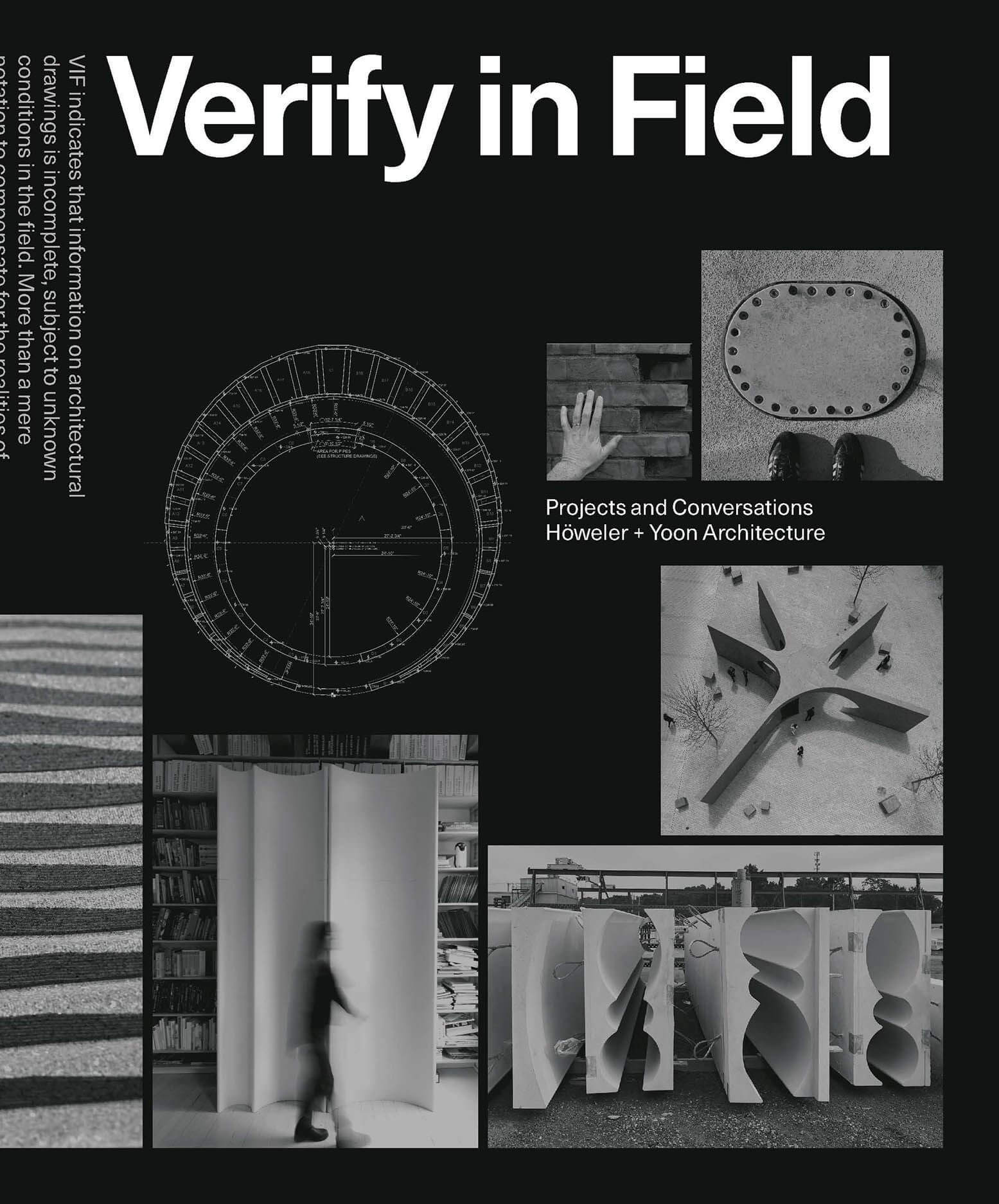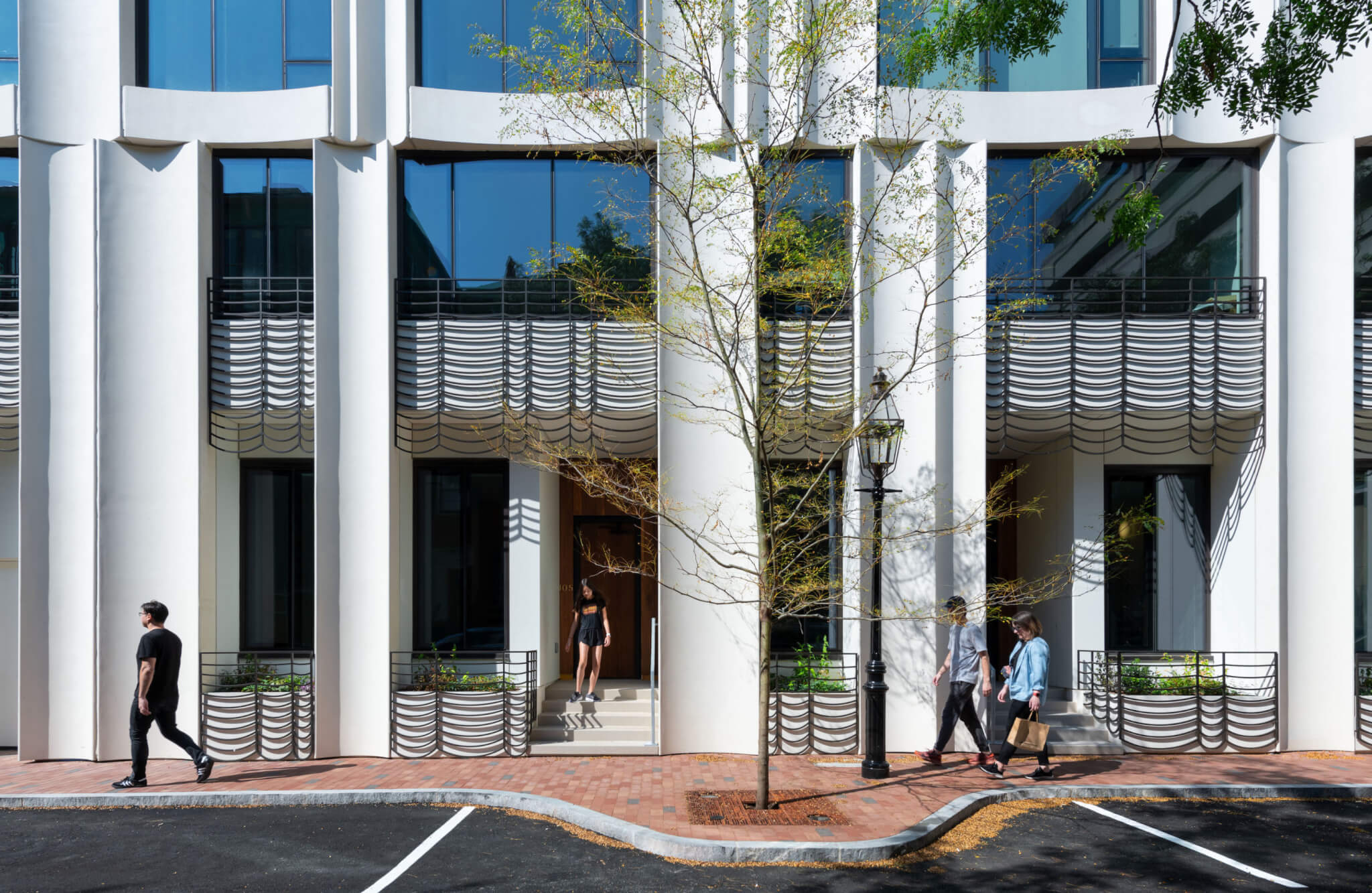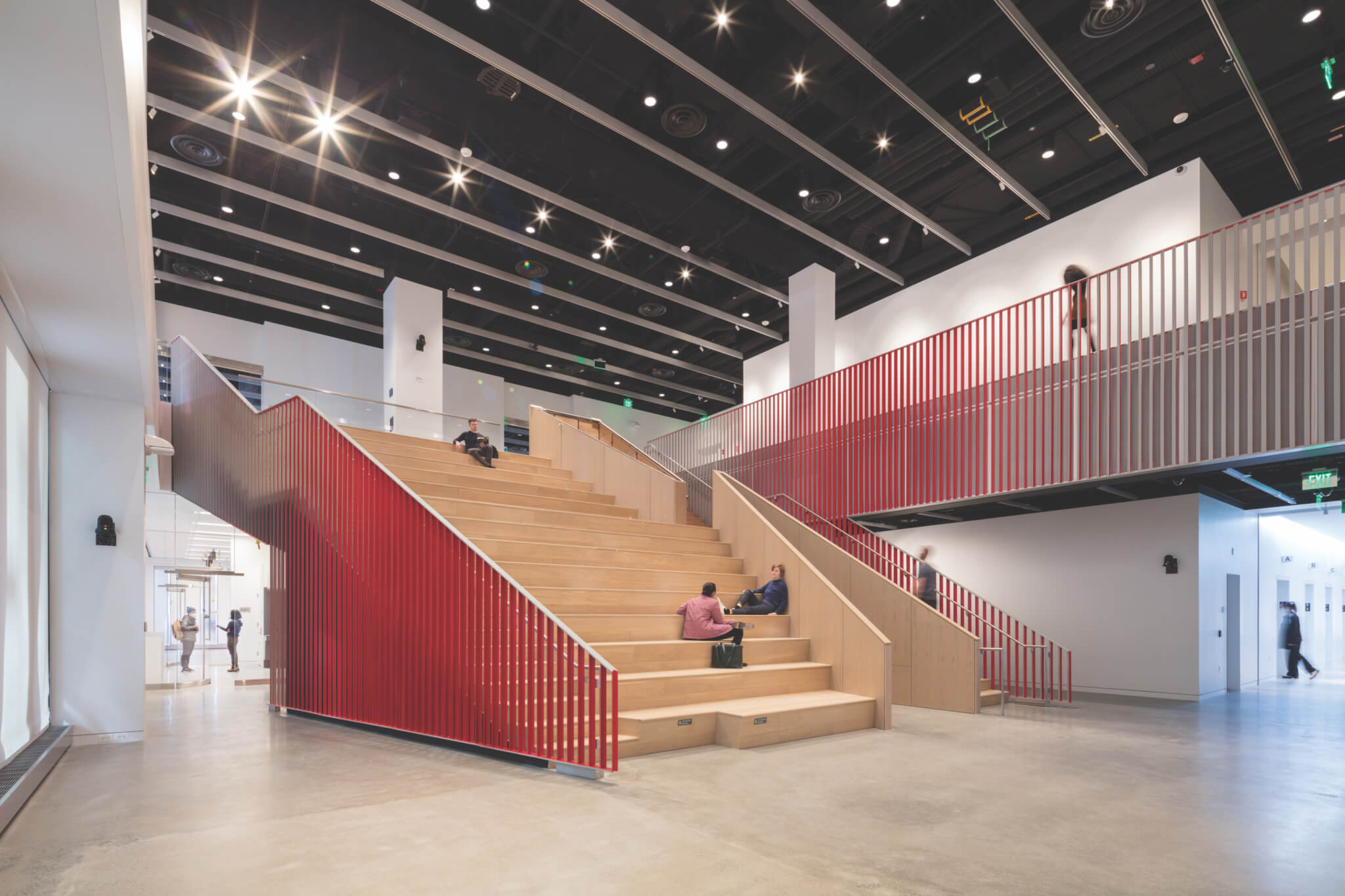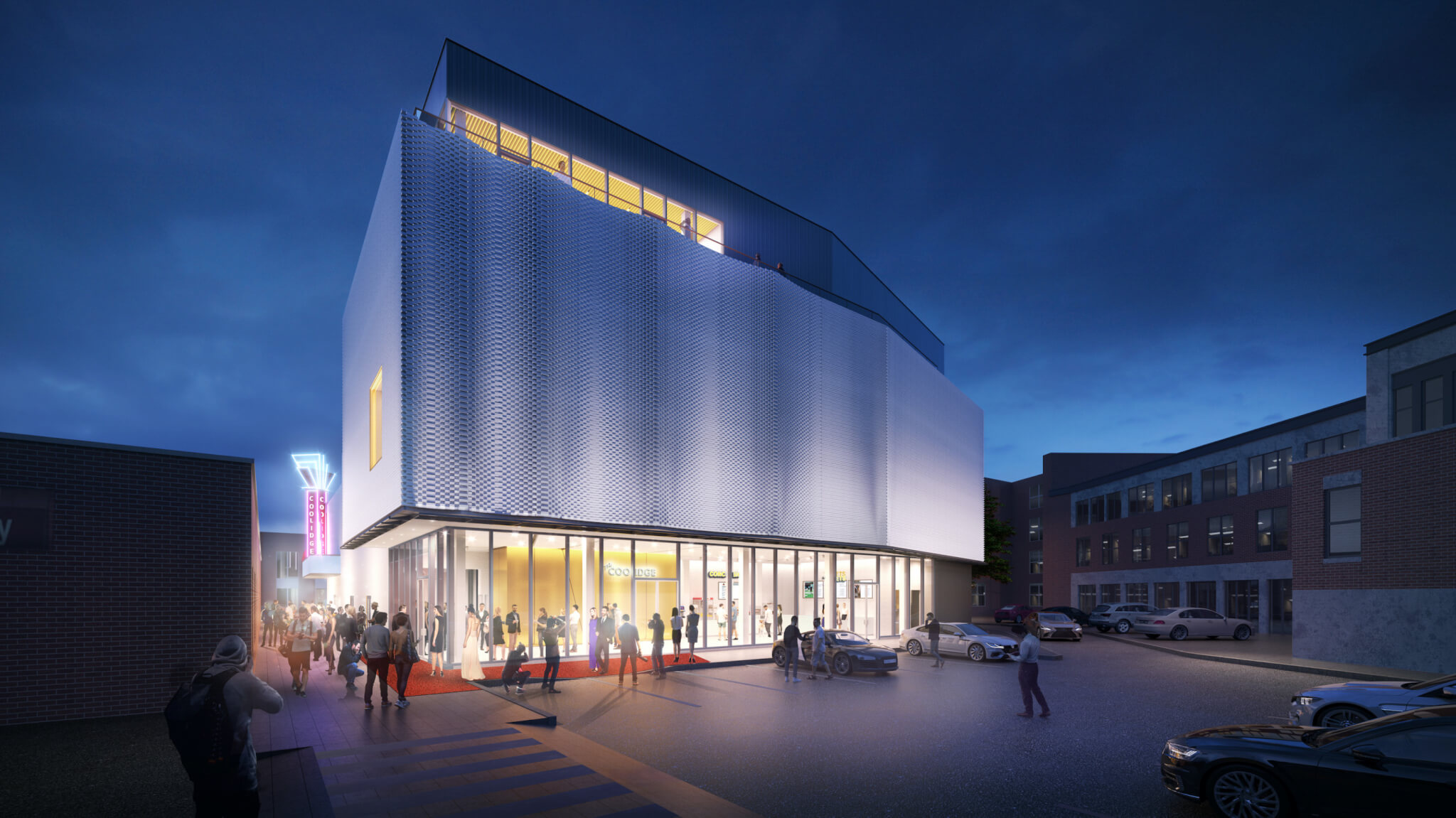On a crisp early-fall Saturday morning in Boston’s hip Leather District, husband-and-wife architectural partners Eric Höweler and Meejin Yoon are busily padding around their office, which resembles other high-design architecture firms in Boston—bleached white floors, innumerable models and samples scattered about, and current project illustrations pinned to the walls. But in addition to operating their firm Höweler + Yoon, a thriving practice with projects around the world, the couple are prominent in architectural academia: Yoon is dean of the Cornell University College of Architecture, Art and Planning; Höweler is an associate professor at Harvard University’s Graduate School of Design.
“Teaching helps me practice, and practice helps me teach,” Höweler told AN. He has the background of a global citizen, as he was born in Colombia to Chinese and Dutch parents and was educated in Thailand. Yoon, a native of South Korea who grew up in the United States, expands on her husband’s take on teaching and practice: “We think of our practice like an academic studio. There are multiple problems being studied. We think about architecture not just as buildings but as a socioeconomic phenomenon.”
The need for a Saturday meeting in the Leather District, where the couple also live, is a function of their respective breakneck schedules. “I try to be here on Mondays,” Yoon said; she then spends the remaining four days in Ithaca, New York. “Right now I’m only engaged in three of the 20 projects we have now in the office.” Similarly, Höweler teaches at Harvard on Tuesdays and Thursdays, limiting his face time in the studio.
“When we’re running around teaching and traveling,” Höweler said, “the younger members are stepping up and bringing their talents to the firm.” The office’s head count is currently at 34; additional leaders include Managing Director Jonathan Fournier, Director Kyle Coburn, and Senior Associate Bernard Peng.
The 20 projects Höweler + Yoon has on the boards are so varied and far-flung as to be difficult to chronicle: the new Karsh Institute of Democracy at the University of Virginia; a residential tower in Shanghai, a hotel in Chengdu, and a cafe/pavilion in a park in Shenzhen, China; FloatLab, a floating laboratory and community center in Philadelphia; a South Boston residence with a substantial affordable housing component; and a residential development in Boston’s Roxbury neighborhood that is 100 percent affordable.
“We don’t want to design buildings only for rich people,” Höweler said.
In a competitive architectural market, Höweler + Yoon is fortunate that most of its work comes from recommendations and word of mouth. But both Höweler and Yoon have earned it. Höweler spent years at New York’s Kohn Pedersen Fox and eventually became project manager for a 118-story building in Hong Kong at the age of 28.
He emphasized that Höweler + Yoon has evolved beyond a small boutique firm headed by a married couple, of which there are many in Boston.
“We’ve grown up,” he said. “We’re not a mom-and-pop anymore.”
Verify in Field, 2022

Most high-end architecture firms have their own monographs that chronicle their work with lavish photography and self-congratulatory text. But Höweler + Yoon’s Verify in Field, published by Park Books, is a different sort of book. It’s more like an academic treatise filled with thought-provoking commentary. Indeed, its subtitle is Projects and Conversations.
The expression “verify in field” (VIF), a common sight on the dimension strings of construction drawings, is explained at the beginning of the work: “VIF is a notational convention used to indicate that some information on an architectural drawing is incomplete, and subject to unknown conventions in the field. VIF highlights the gap between design intent and built reality.”
Instead of unreserved praise for each project, the book engages in a dialogue about its own purpose and meaning. It even contains a question-and-answer session with NADAAA’s Nader Tehrani, both a competitor and a colleague.
212 Stuart Street, 2022

This 20-story, 130-unit luxury high-rise is located between Boston’s bustling Park Plaza District and the Bay Village residential neighborhood. It has an almost baroque profile, as its white shards of precast concrete look like crown molding extruded upward. “Architecture has become so flat in many ways,” Höweler opined in reference to the curvaceous facade. The building “features both high-rise apartments and townhomes, so you can sit out on your stoop and say ‘hi’ to your neighbor.”
Bay Village is an activist community concerned about development, Höweler continued, so “the design is sympathetic to the neighborhood.” The southern portion of the site, closest to Bay Village’s small-scale townhouses, features the development’s townhomes. The north side, facing the more commercial Park Plaza, accommodates retail. The project’s architect of record is the Boston office of Sasaki.
MIT Museum, 2022

The new MIT Museum, which opened on October 2, is adjacent to the MBTA Red Line’s Kendall Square subway station, making it a de facto eastern gateway to MIT’s campus. The first level is open and airy and fully accessible to the public, with or without a ticket. Stadium seating and a stairway lead upward to the exhibits.
“You spiral up through various stairways,” Yoon said. “You keep going up, and you find yourself on the third level in a makerspace.” The architects emphasize there is no distinction between “front of house” and “back of house.”
In Verify in Field, they explain: “The spiral organization … offers new adjacencies through a ‘side of house’ placement of education and curatorial spaces along the length of the coiled gallery … the museum’s workshop, classroom, seminar and Idea Hub spaces benefit from increased foot traffic and visibility.”
Coolidge Corner Theatre, 2016–

Coolidge Corner Theatre is a landmark art-film house in Boston’s tony suburb of Brookline. It opened as an art deco movie palace in 1933 and has been in continuous operation since.
It is now a nonprofit entity that maintains the tradition of screening offbeat, foreign, and independent documentaries and films. It is also one of the few—if not the only—extant art deco movie theaters in greater Boston.
“It’s the anticineplex,” Höweler said. The firm’s plan for the complex is ambitious: a 14,000-square-foot expansion that adds two theaters in the back; a community room at the building’s apex; and a new lobby, which will reorient the main entrance to the rear, accessed by an alley called the Theater Walk. For the addition at the rear, an undulating pattern in white brick will give movement and texture to the facade. The theater’s jaunty art deco neon marquee will remain untouched when the project completes next year.
James McCown is a Boston-based architectural journalist and author of the upcoming Home Office Space: Pavilions, Shacks, and Extensions for Optimum Inspiration and Productivity, to be published by Rizzoli in 2023.











